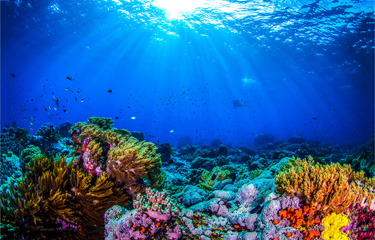UN report: Ocean biodiversity in peril due to overfishing and climate change

The biodiversity of the world’s oceans is declining in a manner unlike any time in human history.
A recent report from the United Nations paints a dire picture for wildlife around the globe, in both land-based and marine environments. About two-thirds of the marine environment has been significantly altered by human actions and climate change has the potential to make the situation much worse, the report said.
The report, from the Intergovernmental Science-Policy Platform on Biodiversity Ecosystem Services (IPBES), was written by nearly 150 expert authors from 50 countries who assessed global changes over the last five decades. Only the initial summary of the report has been released; the full report is expected to exceed 1,500 pages and will be released later this year.
“The health of ecosystems on which we and all other species depend is deteriorating more rapidly than ever,” IPBES Chair Sir Robert Watson said in a statement. “We are eroding the very foundations of our economies, livelihoods, food security, health, and quality of life worldwide.”
Climate change poses an extra threat, the report said, and could drive a decline in fish biomass of 3 to 25 percent by the end of the century, depending on how much humanity does to prevent rising temperatures. At significant risk are the more than 90 percent of global fishermen – more than 30 million people – who are in small-scale fisheries and who account for nearly 50 percent of global fish catch.
“The ocean faces many threats, and climate change and plastic pollution get most of the attention in the media,” Angelo O’Connor Villagomez, a senior officer with the Pew Bertarelli Ocean Legacy Project, who was not involved with the report, told SeafoodSource. “The UN Biodiversity report reminded us, and I quote, ‘Direct exploitation of organisms, mainly from fishing, has had the largest relative negative impact on nature since 1970.’”
Villagomez said he believes that the key to protecting marine biodiversity is fully protected ocean sanctuaries. Today, about 15 percent of the world’s oceans are under some form of spatial protection. In recent years, conservation targets have led to the rapid proliferation of marine protected areas (MPAs) and other forms of spatial closures. For instance, the International Union for Conservation of Nature recommends protecting 30 percent of every ocean habitat.
These spatial protections have been shown to work for coastal areas and species that don’t migrate, such as scallops, lobsters, and reef fishes, but their effect on large, migratory species such as tunas and billfishes has been less certain, according to Kristina Boerder, a postdoctoral researcher at Dalhousie University Halifax in Canada.
But a new study conducted by Boerder suggests that carefully-designed and -managed MPAs and other spatial protections could also benefit large, migratory species. Such protections have already helped rebuild some heavily exploited fish stocks, Boerder said, but success depends on the context of individual fisheries.
“Spatial protection measures have been shown to be very successful in protecting species and ecosystems and helping rebuild stocks, especially if they have been heavily exploited,” Boerder told SeafoodSource.
Spatial protections are especially valuable when implemented around known migration routes and in areas where species are known to aggregate, whether for breeding, feeding, nursing, or other reasons. Better knowledge about the behavior and movements of highly migratory species will allow fisheries managers to tailor spatial protections to species’ needs.
“We already have a lot of data and knowledge, for example, on important spawning grounds or areas where many different species tend to aggregate, but the political will to effectively protect these areas is often lacking,” Boerder said.
But to really work, MPAs and other protected areas need proper enforcement, according to Sally Yozell, a senior fellow and the director of the Environmental Security Program at the Stimson Institute, a think tank.
“To ensure that protected areas are not merely lines on a map where IUU fishing and unsustainable fishing can continue without consequence, we need to arm MPA managers with the human capacity and innovative technologies that will enable them to implement stronger, more transparent monitoring, management and enforcement mechanisms,” Yozell told SeafoodSource.
Those well-managed protected areas and healthier fisheries and marine habitats will be more resilient to the warming waters brought on by climate change – and will especially benefit those fishermen from developing countries who have the fewest resources, Yozell added.
“The developing coastal nations who rely on their fishery resources for food and their economy also are the nations that have the least capacity to manage and conserve their natural resources,” Yozell said. “The countries suffering from overfishing and unsustainable fishing practices are often the countries being robbed of their economic seed corn from foreign fishing interests, potentially leading to economic and food insecurity."






Share